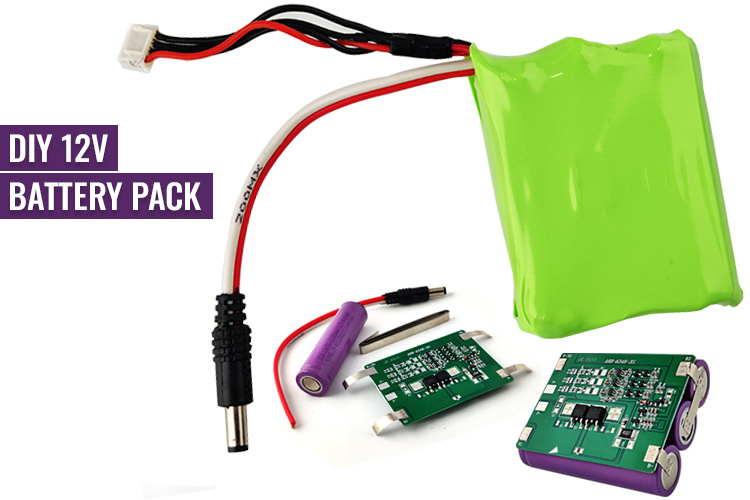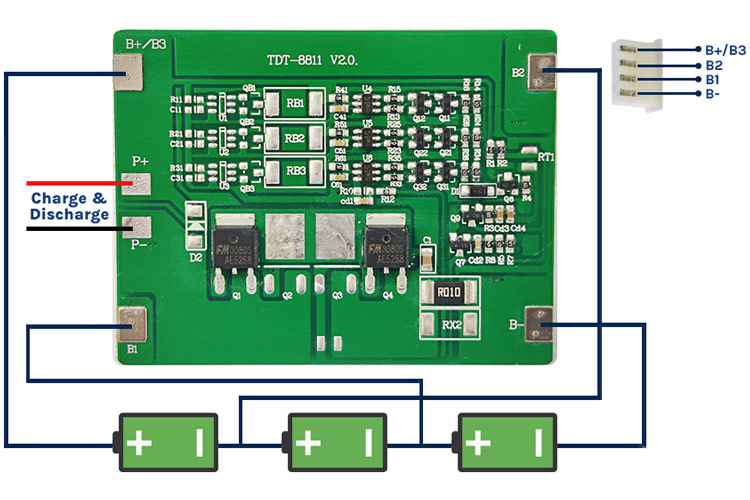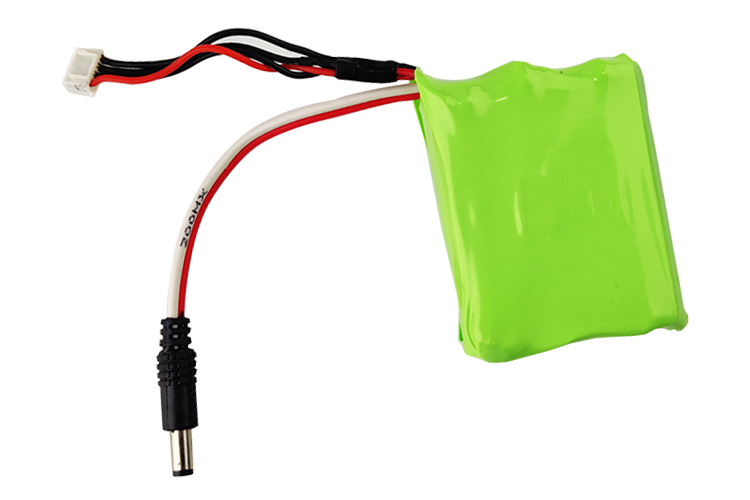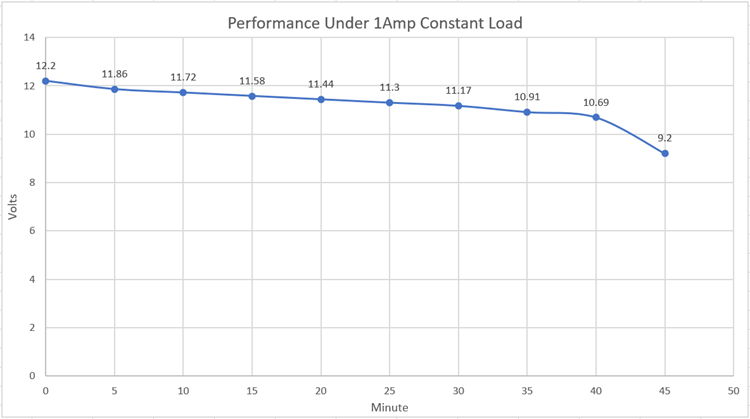
We'll be making a 12V 2000mAh Li-ion Battery pack in this post. We'll start by designing a 3s battery pack, then connecting the BMS to it to execute all of the BMS's functions. Li-ion cells are increasingly used as battery packs for many applications due to their high energy density and rechargeable characteristics. However, we must link a Li-ion cell with a BMS to safeguard the circuit from being destroyed or reducing the cell's life. In this tutorial, we'll construct a simple 3s battery pack and connect it to a 3s 6Amps BMS circuit.
About 18650 Li-ion Cells
The 18650 battery is a lithium-ion battery with a diameter of 18mm and a height of 65mm. Its height and diameter are both greater than the AA size. They are not compatible with AA or AAA size batteries. Because of its high-level capabilities, such as 250+ charge cycles and increased energy density, the 18650-battery type is useful in rechargeable and high current draining devices. Because of its versatility, the 18650 Li-ion battery may be found in various applications, including electric cars/scooters, power banks, and utility devices such as emergency lighting, torchlights, etc.
This battery is famous in the electronics industry because of its safety features, high output current, and energy capacity.
18650 Cell Dimension
The standard size of a 18650 battery is 18x65mm.
- The 18650 battery is 65mm long
- The 18650 battery has an 18mm diameter
More specifically, it measures 65mm in length and 18mm in diameter; however, technically, the 18650-battery size is permitted with some length and diameter tolerance. On the datasheet and characteristics of Li-ion cell, you could see specifications such as 18±0.3mm 65±0.5mm. Remember that 18x65mm is a standard size, and the rest will be handled by device and battery designers and manufacturers. Because different gadgets or devices restrict other locally created technology, the size of the 18650 battery is permitted. That may not be able to produce the correct length and diameter of batteries or battery holding space to fit the device or 18650 Lithium battery, respectively.
About the BMS
A battery management system (BMS) monitors a battery pack, a collection of cells electrically grouped in a row x column matrix to supply a specific range of voltage and current for a set period response to projected load scenarios. A BMS's supervision often involves the following:
- Calculation of the state of charge
- Over-voltage and under-voltage protection for the cell.
- Balance Charging.
- Battery Pack charge management.
- Temperature monitoring of the pack.
The name "battery" refers to the entire pack. Still, the monitoring and control functions are applied to individual cells or groups of cells known as modules in the whole battery pack assembly. Lithium-ion rechargeable cells offer the highest energy density and are used in battery packs for various consumer items, including computers and electric cars. While they function well, they may be harsh if used outside of a relatively narrow safe operating area (SOA), with repercussions ranging from battery performance degradation to outright danger. The BMS has a complex job description, and its total complexity and supervision scope may include electrical, digital, control, thermal, etc.
For more information on the BMS, refer to this article.
Now that we have adequate information about the 18650 Li-ion cell and the BMS, let's begin making a battery pack.
Material Required for a 12V Li-ion Battery Pack
- 18650 Li-ion Cells x 3
- 3S 6Amp BMS (Battery Management System)
- 0.15mm Coated Nickle Strips
- Barallel Connector
- JST XH 2.54 Female 4-Pin Connector
- 100mm PVC Heat Shrink Sleeve
Connections for 12V Battery Pack with BMS

Every 18650 cell can be charged up to 4.2V; we need three cells in series to make a 12.6V battery pack. In the figure above, the connections are indicated.

The BMS is to be mounted as indicated above.
|
Marking On the BMS |
Connection with the BMS |
|
P+ |
Connection to the battery pack's positive terminal for charging and attaching the load |
|
P- |
Connection to the battery pack's negative terminal for charging and attaching the load |
|
B- |
Negative terminal of the 1st cell |
|
B1 |
Positive terminal of the 1st cell |
|
B2 |
Positive terminal of the 2nd cell |
|
B+/B3 |
Positive terminal of the 3rd cell |
To balance charge the battery pack, an extra set of wires must be attached to the battery pack with a JST XH female connector.

To seal the battery pack for safety and sturdiness, we use a 100mm PVC Heat Shrink Sleeve and shrink it around the battery pack. After it's done, the battery pack will look as indicated below.

Performance
To test the battery pack's performance, we hooked it up to a Constant Current DC Load, whose details can be found here.
We set the current to a constant 1 Amp, and below is the result for the test.

- Unloaded Battery Voltage-12.45V
- Battery Voltage Under 1Amp load -12.20V
From the above graph, it can be observed that when a load of 1A is connected to the battery pack, the voltage drops to 12.20V from 12.45V. It keeps on dropping till 9.2V before the BMS turns off the pack to prevent over-discharging of the cells.
Frequently Asked Questions
Q. How long do Li batteries last?
According to most manufacturers, lithium-ion batteries are expected to last at least 5 years or 2,000 charging cycles. On the other hand, lithium-ion batteries may last up to 3,000 cycles if properly cared for and utilized.
Q. Do lithium batteries lose charge when not in use?
Even when the battery is not in use, it will drain the charge, regardless of the kind or substance. Lithium-Ion batteries, too, will deplete when not in use.
Q. What is amps in BMS?
The BMS rating is in amps (a unit of current/flow), whereas the battery capacity is in amp-hours (a unit of capacity/stored energy). The BMS is solely concerned with the maximum amps flowing through it, not with the amp hours.
Comments
BMS boards are available…
BMS boards are available from aliexpress.com, banggood.com. Or if you want faster delivery, try Amazon & ebay.
Thanks for the instructions…
Thanks for the instructions.
I'm a noob and am confused about how to connect the barrel connector (which I'm assuming will be connected to the device you wish to power), as well as the JST connector (used for charging the batteries right?). Are P+ and P- connected to the JST connector? If not, what are they for? To which pins on the JST connector should you connect your 12v transformer to charge the batteries?






Could you share where to buy the circuit board assembly used in this article?